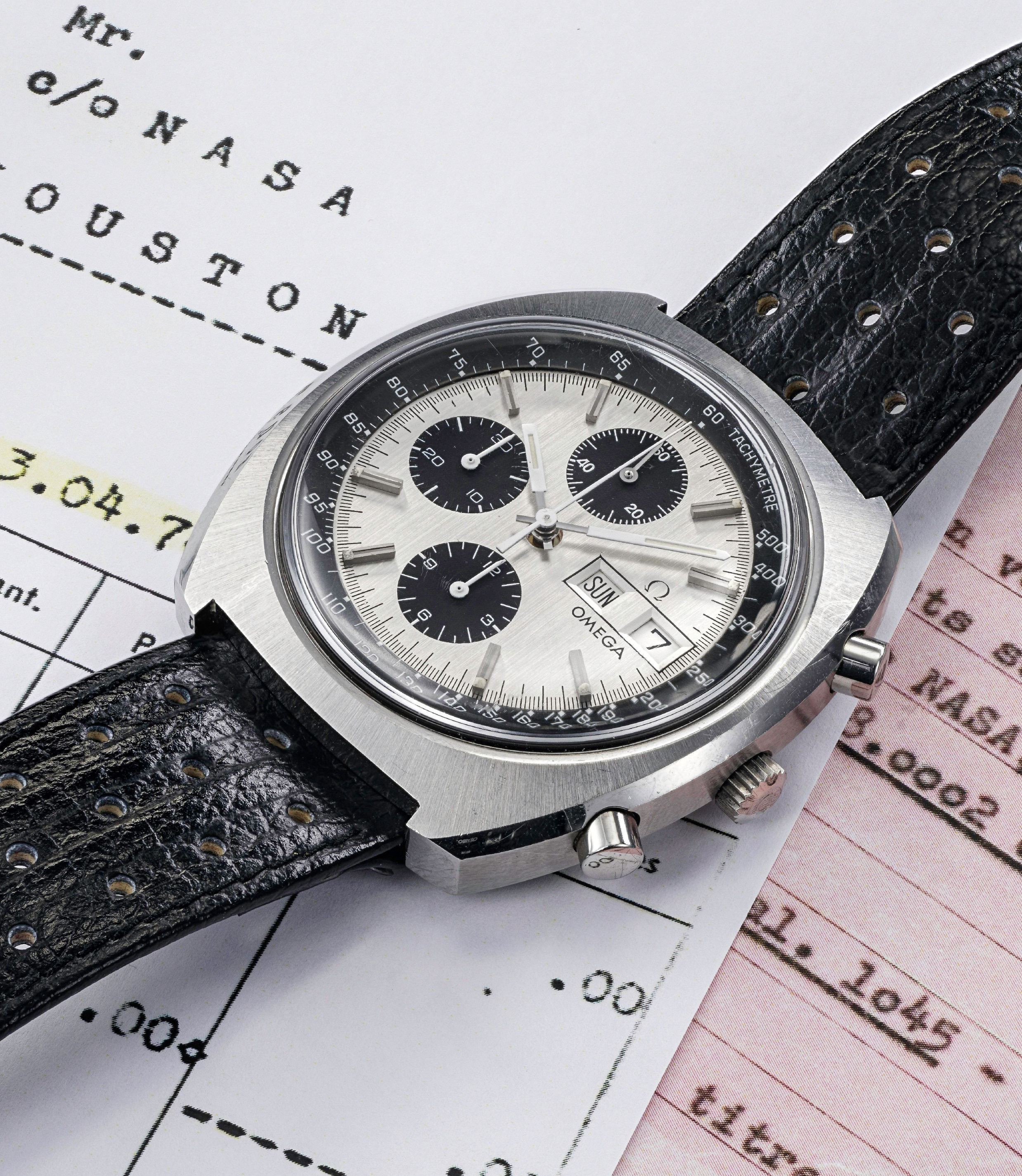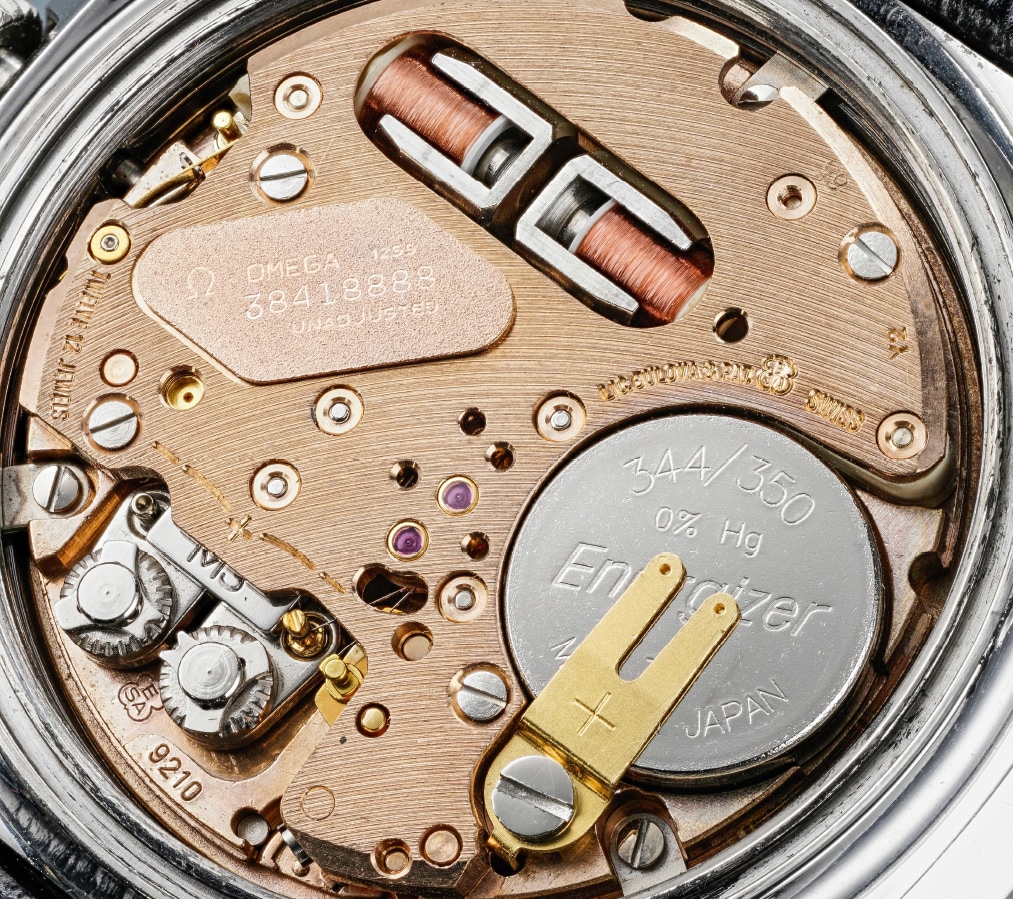



158
Omega
Ref. ST 188.0002
Prototype Alaska III
An extremely rare and historically interesting stainless steel electromechanical prototype chronograph wristwatch with day and date, delivered to NASA in 1978
Full-Cataloguing
In fact, “Alaska” was not just one project but a succession of different NASA-related projects, starting with “Alaska I” in 1969 and ending with “Alaska IV” in 1979. The projects - known to only a very selected few within Omega - demanded the highest level of secrecy and consequently were code-named. Complying with OMEGA’s policy to code-name developments of complete watch-heads (instead of the development of movement-only projects) after the names of either cities, states or countries (such as the “Manhattan” project, with will yield the “Constellation” models) the name “Alaska” was chosen for all future endeavors that would have anything to do with space- and NASA-related activities. Contrary to well-spread rumors, it would seem that the name actually has nothing to do with the extreme temperature variations found in the northernmost State.
After the successful termination of the Apollo lunar program with Apollo 17 that resulted in the last man on the moon, Captain Eugene “Gene” Cernan wearing his NASA-issued Speedmaster, the world’s population was stunned when news leaked that NASA was looking at a new way of space travel: a re-usable space vehicle. Around 1976 the “Space Shuttle” project, as it was finally called, started to become more than just a drawing-board reality, and with the new craft came the need for all NASA-equipment to be re-evaluated, re-tested and eventually re- qualified.
To this end, OMEGA embarked in a continuation of its Alaska project, this time going beyond the scope of a mere mechanical chronograph. The project that would lead to the eventual qualification of the Space Shuttle chronograph was code-named “Alaska III” and it included three different proposals.
One was a re-development of the already qualified Speedmaster Professional chronograph, only this time using the newer caliber 861 surrounded by a mat-finished case and a dial that featured a “radial” layout for its chronograph counters. The second proposal was also based on a mechanical caliber, only this time it was an automatic chronograph with Omega’s caliber 1045. And lastly the present lot: a rather revolutionary approach to use electronic technology and deliver a Speedmaster chronograph that employed a tuning fork as regulating organ. This resulted in Caliber 1255, in the guise of a model that became known as the “Speedsonic”, and was delivered to Nasa with the reference ST188.0002/999.
OMEGA’s research & development department designed a dial that would enhance legibility under difficult lighting situations, thus ensuring that the various sub-dials would remain clearly visible for the astronauts that would eventually use the watch during their mission.
According to archival information discovered at the vaults of the OMEGA Museum, three prototype pieces were produced and delivered to Houston with the date on the respective invoice indicating April 3, 1978.
The outcome of NASA’s re-qualification process is a historical fact: NASA engineer Mr. James H. Ragan, the same person who oversaw the 1965 tests which selected Omega as official Nasa supplier, possibly following a traditionalist path selected the “Alaska III” version of the radial-dialed Speedmaster “Moonwatch”. One of the reasons that made the mechanical chronograph more suitable than its electronic competitor, was the possible risks involved with the use of batteries in space.
The present lot, bearing the movement number 38’418’888 is one of the very three pieces delivered for NASA evaluation and testing and represents a truly unique opportunity to not only own and appreciate an item that is deeply rooted with NASA’s heritage and humankind’s conquest of space, but also an incredible and landmark piece of OMEGA’s watchmaking history.
Omega
Swiss | 1848Omega's rich history begins with its founder, Louis Brandt, who established the firm in 1848 in La Chaux de Fonds. In 1903, the company changed its name to Omega, becoming the only watch brand in history to have been named after one its own movements. A full-fledged manufacturer of highly accurate, affordable and reliable watches, its sterling reputation enabled them to be chosen as the first watch company to time the Olympic Games beginning in 1932. Its continued focus on precision and reliability ultimately led their Speedmaster chronograph wristwatch to be chosen by NASA in 1965 — the first watch worn on the moon.
Key models sought-after by collectors include their first, oversized water-resistant chronograph — the reference 2077, early Speedmaster models such as the CK 2915 and 2998, military-issued versions of the Seamaster and oversized chronometer models such as those fitted with their prestigious caliber 30T2Rg.